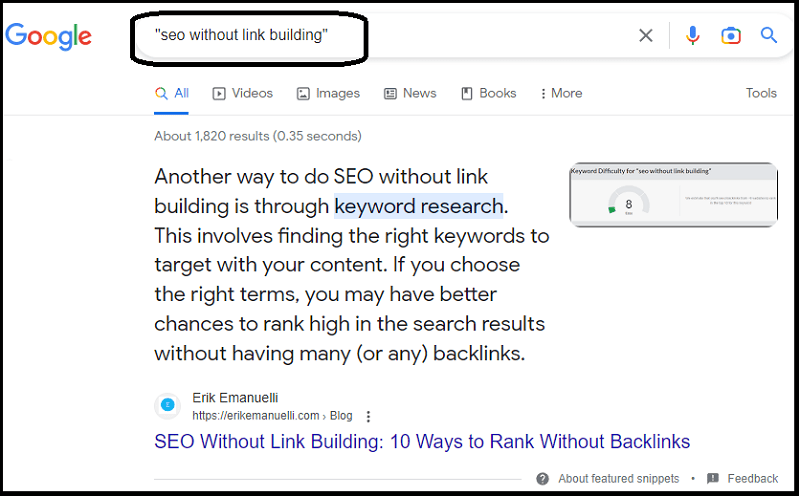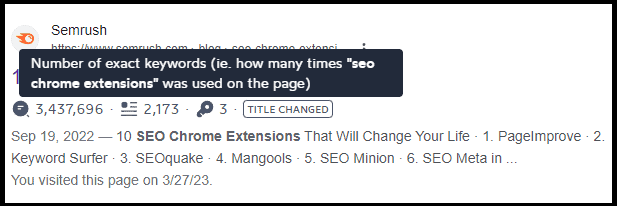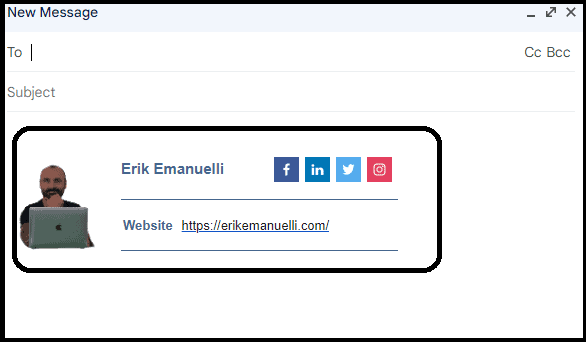Are you using content marketing hacks to get more traffic and leads?
No?
Don’t worry.
This post is packed with the best content marketing strategies that you can start implementing today to get your business noticed.
Contents:
Brainstorm Viral Topic Ideas
Start by asking yourself what questions your target audience may have about your industry, and then brainstorm topics that can be covered.
The internet is full of tools you can use to spot trends and identify relevant subjects that can help you attract the right type of audience.
Buzzsumo, Google Trends, Ubersuggest, and AnswerThePublic are some great resources for this.
Take Google Trends, for example. You can explore by entering a term, or discover what is trending right now:

If you keep scrolling down, you can find some interesting topic ideas, like this one: “Netflix password sharing” (which are keywords trending these days).
If you search for it, you can notice how many news articles are covering this subject.
So, what about search volume?
My favorite Chrome extension (Keyword Surfer) is telling me there are around 18,100 searches per month in the U.S.:

This means that if I wrote an article about Netflix password sharing, it might generate some traffic to my website (maybe, grabbing first positions for related long-tail keywords).
Another content marketing hack is checking what is working for your competitors.
You can visit the Facebook Ad Library and enter a term to find targeted campaigns that are rocking on the platform.
For example, if you type “content marketing”, you’ll get a list of companies or individuals who are running ad campaigns based on this keyword.

You can also dive into their website and study their strategy and audience to identify opportunities or new ideas to build your content.
But wait – there’s more.
You can check the ads and promoted posts of your competitors by searching for their names.
The ad includes the exact words and phrases used to capture the audience’s attention:

You can use any of the similar keywords used in your competitor’s ads as LSI keywords in your upcoming content.
Craft Question-Based Headlines
This is one of the easiest, but effective content marketing hacks you can start using right away.
Headlines are the first thing people see, so you should make sure yours stand out.
People are more likely to click on a link if its title is phrased as a question that arouses their curiosity – like “How can I double my website traffic in two days?” or “What’s the best way to save money on groceries?“.
So, be creative and think outside the box.
Use powerful words like ‘amazing’, ‘stunning’, or ‘epic’ to draw people’s attention.
Also, don’t forget to include keywords in your title – this will help you rank higher in search engine results pages and attract more organic traffic.
To find questions your target audience may have, use sites like Quora or Reddit. Look for topics related to your content and the questions that people ask about them.

Do you want more sources of ideas?
The “People Also Ask” section can be another great tool for research.
Google lists the questions that are similar to your search term.
For example, the query “rich snippets“, would bring this result:

And it does not end here.
If you click on each question, you’ll find a new list of related questions.
I recommend that you take notes of the keywords and topics that appear more often and use them as inspiration for your headlines.
Even Google Search itself can help you with brainstorming ideas.
Just type a query, for example, “failing core web vitals“, and the search engine will list results, which often bring up question-based headlines:

See?
Content creators are dominating the search results with this kind of post title.
Post “A vs B” Articles
Another clever content marketing hack is to compare two popular topics: “A vs B” articles.
Such articles are often a great source of traffic, as they cover both sides of the story and provide useful information.
People love reading comparisons because it’s easier for them to make an informed decision without spending hours researching both subjects.
For example, you could write a post comparing WordPress vs Squarespace.

As you can see, there’s a 3600 search volume in the U.S. for that keyword.
You can even compare different products and services and address the pros and cons of each one.
This type of content is often quite popular – people love reading comparisons in order to make better decisions.
Do you want help with content creation?
You can use a tool like AnswerThePublic to see what people are searching for when it comes to both topics.

This will give you an idea of the questions that your target audience may have, so you can address them in your post.
Optimize Around Hidden Gems Keyword
When it comes to content marketing, most people focus on popular keywords. However, there is still potential in targeting long-tail and less competitive phrases known as “hidden gems”.
These keywords tend to have lower search volumes but are often easier to rank for.
So why not take advantage of them?
The key here is to make use of research tools, like SEMrush or Ahrefs, to identify those hidden gems. If you can’t afford the paid versions, you should know that both have free features that you can use.
Semrush’s Keyword Magic Tool allows you to easily find related terms with information about intent, search volume, trend, and keyword difficulty.

Ahrefs’ keyword generator offers similar features.
You can enter a main keyword and get a list of related phrases, along with other metrics like the search volume, and keyword difficulty.

Do you want to read more ways to find those hidden gems?
Here we go:
Once you have a list of keywords and know how to create a keyword strategy, start optimizing your content around them. Include them in your titles, headings, and body copy, ensuring that they are used naturally.
Try to create the best article on the web for that term to earn a featured snippet as I did for “SEO without link building“:

Leverage Semantic SEO
With Semantic SEO, you optimize content around topics, not just single keywords.
This means that you create content based on related concepts, instead of focusing on one keyword at a time.
For example, if you wanted to rank for the term “content marketing hacks“, you could also target related topics such as:
- Content optimization
- SEO copywriting
- Content promotion strategies
- Tactics for content repurposing, etc.
By optimizing your content around a whole subject instead of individual keywords, you can get better results in search engine rankings and drive more organic traffic to your site.
Plus, you’ll create content that’s more comprehensive and helpful to your readers.
To help you with planning and writing, you can use the Keyword Surfer Chrome extension.

Not also it will show you the search volume for each keyword, but it will also list related topics and terms.
These can be great starting points for creating your semantic content strategy.
And it does not end here.
You can study the competition directly in the SERPs. It gives you, at a glance, two important things.
The number of words used on the page ranking for that topic (by doing so, you can estimate the amount of content you need to create in order to outperform your competitors):

And the number of exact keywords included within the content:

Guest Blog Like a PRO
Guest blogging is among my favorite content marketing hacks.
It can help you drive more traffic, create connections with people in your industry, and build authority.
Guest posts have been around since the early days of SEO and it’s still a powerful way to reach new audiences, get backlinks, and gain exposure for your brand.
However, be careful when choosing blogs to contribute to – make sure they have a good reputation and are related to your niche.
Reach out to those sites through email, explain why you believe your content would be valuable to them, and offer your services as a contributor.
Here’s the personalized template I’ve been using with a high percentage of positive replies:
Subject: Hey [Blogger Name], [Your Name] Here
Hey [Blogger Name],
how is life treating you?
I’m [Your Name] and my website is:
[Your Site URL]
Here are some of my recently published guest articles:
- [Mention the URLs of Your Best Guest Posts Here]
I’ll go straight to the point. I’d like to submit a contribution to your site.
I have this title in mind:
I’d like to hear what you think!
Cheers,
[Your Name]
Now you may be wondering, how can you find relevant websites?
Here are some strategies you can use:
But my favorite one is this one.
Simply identify the name of a fellow blogger in your niche that you’ve been seeing around guest posting like a PRO.
Then, Google:
name of the blogger + “author”

You’ll find plenty of guest posts published by that person on different sites.
And you can reach out to those websites as well to pitch your content ideas.
Include Social Links in Your Outreach Emails
When you’re doing outreach, don’t forget to include links to your social media profiles in the emails (and to your website).
This will allow any potential site owners you contact to get a better idea of who you are and what kind of content you create.
And this has been proven to work!
According to a joint study by Backlinko and Pitchbox, an analysis of more than 10 million outreach emails revealed that including social profile links in the email can increase response rates by up to 9%.

I personally like people who write me or reply to my emails with a personalized signature.
So, how can you create it?
I use Google Workspace, and it allows me to easily create a nice-looking signature that I can include in any of my emails.
This is what it looks like:

So if you’re using Gmail, G Suite, or any other email provider, make sure to create your own personalized signature and add it to all of your outreach emails.
This will help increase response rates even further!
Add Call to Action Buttons
This can be one of the most powerful content marketing hacks. If you want to get more out of your content, don’t forget to include call-to-action (CTA) buttons on your pages.
These are buttons that encourage visitors to take a desired action on your site – such as subscribing to your newsletter, downloading an eBook, or signing up for a webinar.
For example, I use the Social Warfare plugin to display beautiful, responsive sharing buttons at the end and beginning of my posts:

They are working well to help my readers share my content, and I’m sure they can help you too.
To help you increase your conversions, here are some tips to improve your CTAs:
- Give a Reason to Take the Action
- Leverage FOMO
- Sparkle Emotion
Give a Reason to Take the Action
Put simply, you need to explain the benefits to visitors.
For example, improving their health, helping in weight loss, or saving money.
This is closely linked with your value proposition, also known as your unique selling point (USP).
I used this simple formula:
Question + Answer with Benefits
Here’s the CTA at the end of my blog posts with the subscription to my upcoming course “From Zero to Hero”:

Leverage FOMO
FOMO (fear of missing out) is a powerful motivator.
You can leverage it by using phrases like “Limited-time offer” or “Hurry before it’s too late.”
These will encourage people to take action right away instead of procrastinating and forgetting about it over time.
Here’s an example:

Sparkle Emotion
People respond better to emotions than facts and figures.
Think about the words you use in your CTAs – do they spark emotion?
Make sure to include words that will evoke strong feelings in readers, such as “incredible,” “amazing,” “unbelievable,” etc.
You can also use visuals to create emotion quickly. Think about choosing images that will evoke the desired feeling.
You can use this empathy map to better understand how your audience thinks about the things they interact with.

Refresh Old Content
Outdated content can hurt your SEO rankings and reduce conversions.
So it’s important to refresh old posts from time to time in order to keep them up-to-date.
You can do this by updating old stats, adding new information, tweaking the headline, editing for grammar mistakes, and changing images.
These are all easy changes that can have a positive impact on your organic search rankings and website performance.

There are four phases in this process:
Identify Content to Refresh
Start by identifying the content that needs refreshing.
You can do this by checking the posts that are getting the least traffic or engagement.
You can use Google Search Console to get an overview of your content performance and find out which articles need to be updated.
Update the Content
Once you have identified the content that needs refreshing, it’s time to start updating it.
Make sure to add new information, create a more engaging headline, correct any mistakes, and update images.
Promote the Refreshed Content
After you have updated the content, it’s time to promote it.
You can do this by republishing it on social media, sending a newsletter to your subscribers, or pitching it to other blogs in your niche.
Measure Results
Finally, measure the results of your efforts.
You can use Google Analytics to track traffic and engagement on each post.
This will help you understand how successful your content refresh was and what changes need to be made in the future.

Reverse Engineer Your Competitors
Reverse engineering your competitors is among the most powerful content marketing hacks.
Here’s what you need to do:
- Find Your Competitors
- Study Their On-Page Content
- Analyze Their Technical SEO
- Reverse Their Backlinks
Find Your Competitors
The first step is to identify your competitors. You can use tools like SEMrush and Ahrefs to find the top sites that are ranking for the same keywords as you.
Do some research and make a list of those sites.
You can also do this manually by checking the SERPs for specific keywords your site is ranking for.

Study On-Page Content
Now, it’s time to analyze each competitor’s on-page content.
Take a look at the quality of their content, how often they post, and what kind of topics they cover.
Also, take note of the length of their posts as well as any other patterns that you can spot.
The SEO Quake Chrome extension will help you in this process:

Analyze Technical SEO
The next step is to analyze the technical SEO aspects of each competitor’s website.
Take a look at their page titles, meta descriptions, heading tags, internal links, and other technical aspects of their content.
You can use the Moz Chrome extension for these tasks:

Reverse Their Backlinks
Finally, you need to reverse-engineer your competitor’s backlinks.
You can use tools like Ahrefs or Semrush to analyze the backlink profile of each competitor.
This will give you a good insight into where they are getting their links from and how you can replicate them.
If you can’t afford the premium plans for both tools, use the free features they offer.
Semrush Backlinks Analytics gives you an overview of your competitor’s backlinks, for up to 10 searches per day:

Ahrefs Backlink checker gives you a list of backlinks for a specific domain, with anchor and text URL (limited results):

Before You Go
These content marketing hacks can help you increase visibility, build engagement, and drive conversions.
But wait!
Don’t miss reading these 15 methods to help you create content that both your visitors and search engines will love:
Now, it’s over to you.
Which content marketing hacks will you try first?
Do let me know in the comments below!


Hi Erik,
Another great article my friend. I have been using some of these techniques recently and monitoring results. I am seeing some uptake, so I’ll keep going. I will also adopt some of your suggestions, like Reverse Engineering competitors and updating older content, which is on my todo list.
Hi Barrie,
I’m glad to hear you learned something new from the hacks list.
My favorite ones are #4 and #6.
Thanks for the support!
Really good super in-depth post outlining content marketing strategies. Definitely need help in that area. It’s been an intense few weeks getting my stuff up to par. Thanks.
Hi Annette,
hope the strategies explained in this post help promote what you do! 😀
Thanks for the positive feedback.
Great job on this post Erik. Question titles hit the mark so well. All of my question posts generally drive the most traffic because people seem to click to get the answer to the question. The key is to publish long form, detailed posts that deliver a thorough answer in order to grow a loyal blogging community. Excellent job bro.
Ryan
That’s right, Ryan.
Thanks for sharing the content and for leaving your thoughts here.
Great tips, Erik!
These hacks provide actionable strategies to boost traffic and generate leads effectively.
Good to hear these content marketing hacks helped you, Charles.
A great article packed with practical advice. Thanks Erik.
Thanks for the great feedback, Iain.